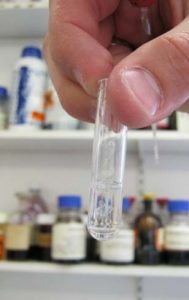Ron Hines DVM PhD
The Urine Sulfosalicylic Acid Test For Protein = The SSA Test
The SSA test is an older alternative method of detecting when abnormally high amounts of albumen protein are present in your pet’s urine. Healthy kidneys do not let blood albumin escape into urine. The SSA test was once thought to be a more precise way to measure that protein leakage than visually comparing the color change on veterinary office urine “dipsticks” to the chart that is printed on the side of the bottle.
These days, the urine microalbinuria test, the urine P:Cr ratio, and your dog or cat’s BUN and Creatinine blood levels are the tests veterinarians choose when screening your dog or your cat for evidence of kidney disease. The SSA and the first two other tests detect situations in which blood proteins are abnormally leaking into your pet’s urine because of damaged kidney filtering units. The SDMA test is also a current favorite. Read about the SDMA test here and its significance here.
Since transient situations such as high fever or extreme exertion can also account for temporary protein-positive urine, consider having these tests repeated later if either situation preceded positive tests.
DxMe
